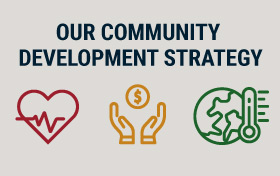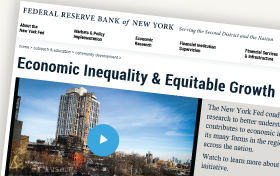The 2005 Bankruptcy Reform and the Foreclosure Crisis
Our previous post showed that the 2005 Bankruptcy Abuse Prevention and Consumer Protection Act (BAPCPA) was associated with a sizable rise in foreclosure, in addition to a decline in bankruptcy filings and a rise in insolvency.
Insolvency after the 2005 Bankruptcy Reform
Personal bankruptcy was introduced in the United States through the Bankruptcy Act of 1978.
Payback Time? Measuring Progress on Student Debt Repayment
Student debt continues to make headlines because of its high balances and high rates of delinquency and default—troubling issues that we discussed in our previous posts this week.
Looking at Student Loan Defaults through a Larger Window
An analysis of student loan borrower distress uncovers some new facts. First, cohort default rates appear to have been worsening over time, Second, defaults appear to be concentrated among the lowest-balance borrowers, who may not have completed their schooling, or may have earned credentials with lower payoffs than a four-year college degree. Finally, snapshots of delinquency and default rates miss the fact that many borrowers who are current today have had serious stress in the past.
The Student Loan Landscape
Student loans have recently attracted a huge amount of attention from the press and policymakers.
Just Released: Student Loan Delinquency Rate Defies Overall Downward Trend in Household Debt and Credit Report for Fourth Quarter 2014
Meta Brown, Andrew F. Haughwout, Donghoon Lee, Joelle Scally, and Wilbert van der Klaauw Today, the New York Fed released the Quarterly Report on Household Debt and Credit for the fourth quarter of 2014. The report is based on data from the New York Fed’s Consumer Credit Panel, a nationally representative sample drawn from anonymized […]
Historical Echoes: No Valentines Please, We’re British
It’s almost Valentine’s Day, and we’re not asking you questions or dispensing advice about it — that’s not (yet) our business.
Available for Sale? Understanding Bank Securities Portfolios
It’s natural to think of banks as intermediaries that take in deposits and use them to make loans to businesses and individuals.
Counterparty Risk in Material Supply Contracts
Forming long-term partnerships with customers and suppliers often creates a competitive advantage for firms because it permits resource sharing, eases financial constraints, and encourages investment in relationship-specific capital.
Highlights from the Global Research Forum on International Macroeconomics and Finance
International financial flows are a key feature of the global landscape and are relevant in many ways for central banks.














 RSS Feed
RSS Feed Follow Liberty Street Economics
Follow Liberty Street Economics